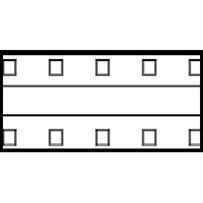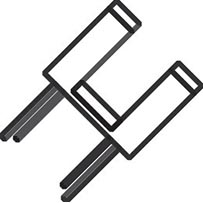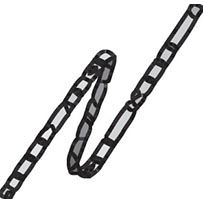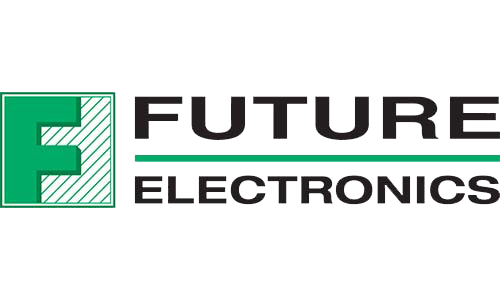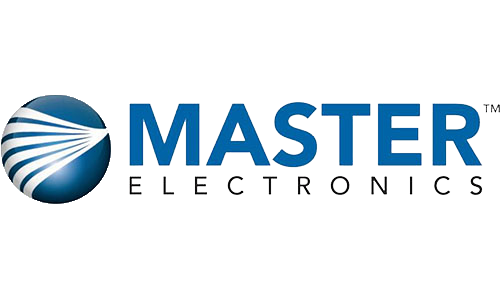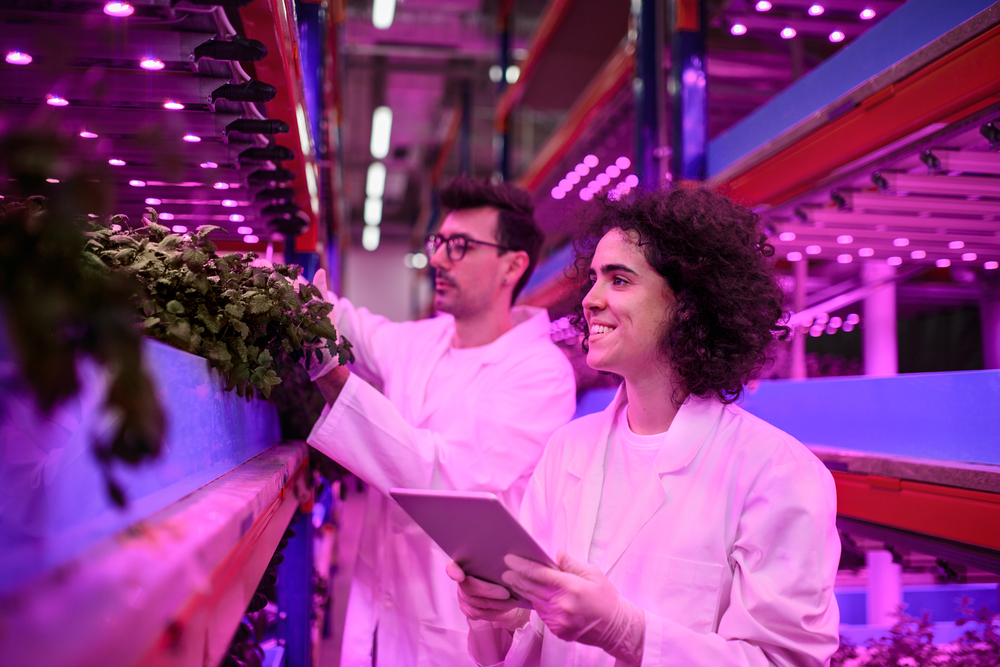
When people hear the word “farm,” the only indoor portion of the farm they picture is the big red barn. But many modern farms are entirely indoors, which has everything to do with control over the growing environment. Most of this control comes from LED horticultural lighting. This lighting technology uses LEDs to provide plants with customized light spectrums best suited for their growth.
The Need for Innovation in Agricultural Lighting
Traditional high-pressure sodium (HPS) lamps have been used in both indoor and greenhouse settings for supplemental agricultural lighting. These lamps are well known for their energy inefficiency. HPS lamps convert a significant portion of their energy into heat, which leads to wasted electricity and increased costs for farmers. The heat generated by traditional lights can directly stress plants, leading to reduced growth and potential yield losses in certain varieties. Farmers often need to invest in additional cooling systems to maintain optimal temperature ranges for plant growth.
Beyond heat and poor energy efficiency, traditional horticultural lighting emits a broad spectrum of light, including wavelengths that plants don’t utilize. Traditional lighting does not offer the ability to customize the light spectrum; as a result, plants simply do not grow as well. Agricultural LED systems, on the other hand, demonstrate significant benefits when compared to traditional lighting sources.
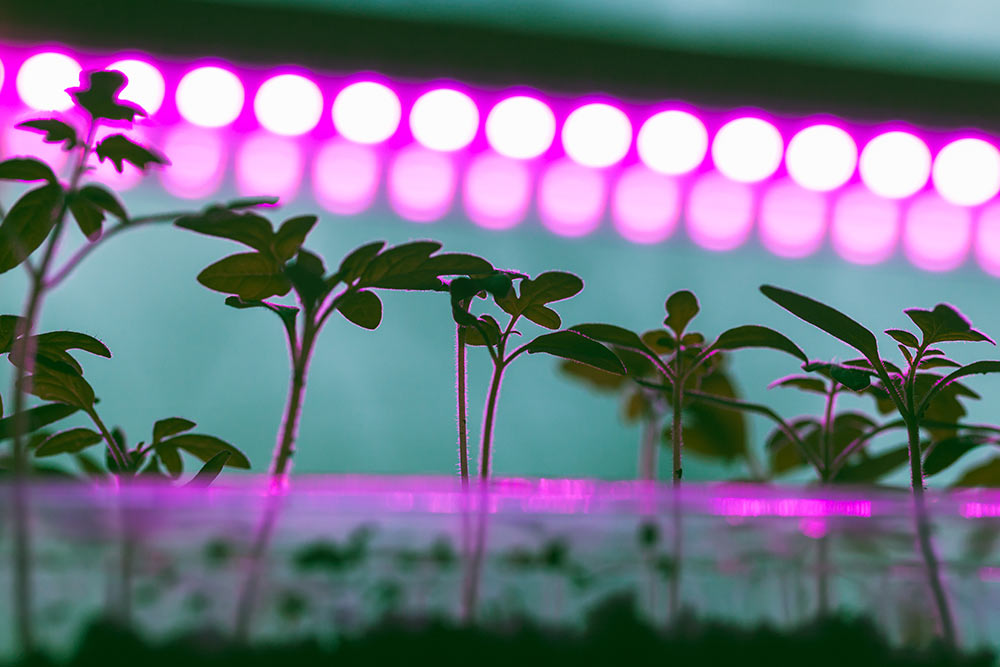
Advantages of LED Horticultural Lighting
Unlike traditional broad-spectrum lighting used in horticulture applications, LEDs emit specific wavelengths of light. This allows growers to tailor the light spectrum to the unique needs of their crops at various growing stages. Each plant species has its own “peak wavelength” at which it absorbs light most efficiently. LEDs can be tuned to a crop’s peak wavelength to optimize photosynthesis and contribute to overall crop quality.
LEDs for agricultural applications boast benefits that contribute to cost savings and energy reductions. LEDs use significantly less energy than traditional bulbs to achieve the same output. This means lower electricity bills for farmers. LEDs also have a much longer lifespan than traditional HPS lamps, leading to reduced maintenance costs. And, because of reduced heat generation, farmers do not need to invest in additional cooling systems.
The Growing Field of LED Lighting Applications
LED lighting offers a versatile, adaptable solution across many applications in agriculture.
Indoor Farming and Greenhouse Growing
For indoor farms, LED lighting helps to maximize plant production in limited spaces. Otherwise known as Controlled-Environment Agriculture (CEA) systems, indoor vertical farms, greenhouses, hydroponic systems and container farms use advanced techniques to highly regulate the growing environment. Incorporating LEDs into CEA systems allows for precise light distribution and wavelengths for crops. Using LEDs in these controlled environments also allows farmers to grow plants year-round instead of during a limited season.
Vertical Farming and Urban Farming with LED Lighting
Vertical farming is a practice where crops are grown in vertically stacked layers. This method allows for increased food production in urban areas with limited space. LED lighting plays a crucial role in vertical farming as it provides the necessary light spectrum for plants to thrive in a controlled indoor environment.

Supplemental Lighting for Outdoor Farms
Sometimes outdoor crops don’t get even light. This can be for several reasons, including shade from trees or buildings, as well as cloudy conditions. Outdoor supplemental LED lighting can help crops receive optimal light exposure. LEDs help give outdoor plants a boost by triggering different responses in plants, like promoting flowering or fruit production.
LED Lighting Systems: Challenges and Solutions
While LED technology offers clear benefits, there are some challenges associated with implementing LED systems into agricultural settings.
Cost Considerations
Compared to traditional lighting options, LED systems have higher initial upfront costs. Even though LEDs have longer lifespans and lower operating costs in the long run, the primary investment can be a barrier for some farmers. However, in addition to pursuing financing to pay for LED lighting, farmers can take advantage of government grants and tax incentives to add these energy efficient systems to their operations.
Complexity in Setup and Maintenance
Setting up and maintaining LED systems requires technical expertise. This can require education or the help of a paid expert to get a system up and running. While these hurdles cost time and financial resources, in the long run, LED lighting can make farming more efficient. By learning a system’s advance features, farmers can schedule light dimming and spectrum control, essentially automating changes in lighting.
Achieving Uniform Light Distribution
During the initial installation of an agricultural LED system, it can be difficult to achieve uniform light distribution. As uneven light distribution can lead to reduced crop yield and variable plant growth, farmers should strategically plan and map out the placement of lights throughout the growing space to ensure even light distribution. Continue to monitor and fine-tune light distribution by using light meters to identify areas with either insufficient or excessive light.
Although there are some legitimate challenges posed by modern LED systems, incorporating these strategies and best practices can help mitigate them.
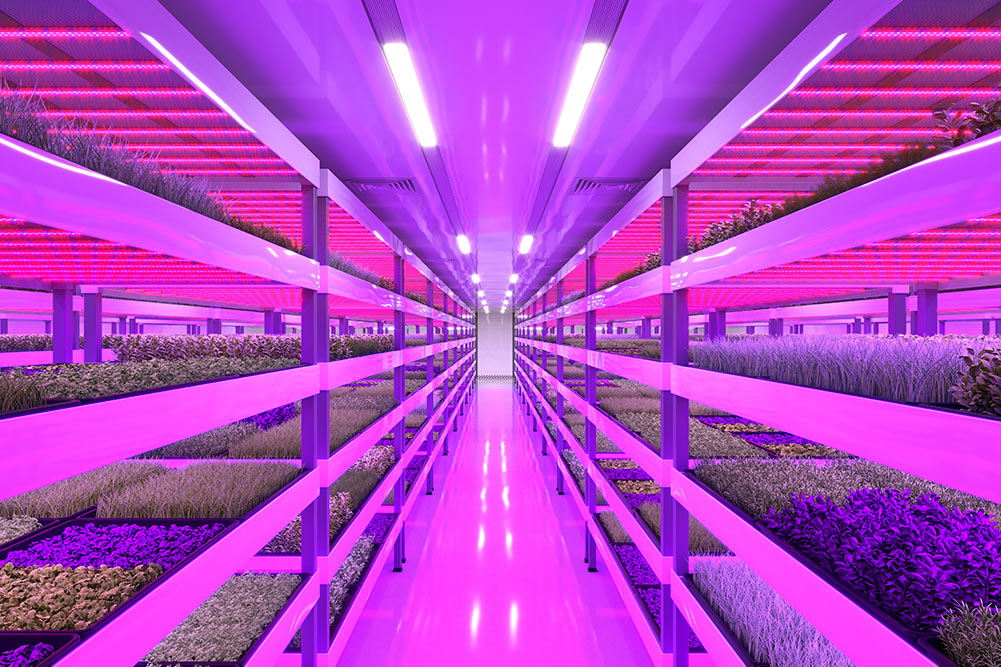
American Bright: Illuminating Modern Horticulture
As a leading global supplier of LED components and design services, American Bright has the right LED components for twenty-first century farming. By offering a wide variety of LED products alongside custom-designed solutions, allow our extensive experience in engineering and lighting design assist you from the seed of an idea into a fruitful reality. Contact the American Bright team today.




